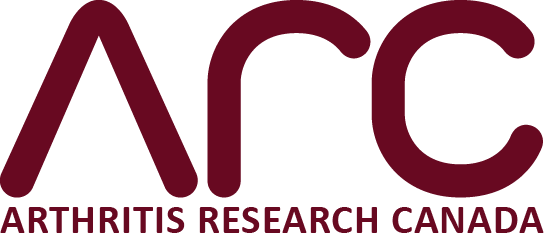Lesson 2 of JointHealthTM Education – Ankylosing Spondylitis focuses on giving you the essential facts about the disease and diagnosis to help you become your AS “expert”.
The more fact-based information you know early in your journey with the disease, the better. Whether at the time of your diagnosis, during treatment conversations, or looking after yourself day-to-day, it is the facts about AS that will support you in understanding the choices before you and making good decisions for yourself now, and throughout your journey.
At the end of Lesson 2, you will know the basic facts about AS, including who commonly gets it and what it does to the body, how to get properly diagnosed, the essentials on AS treatment approaches, and information on the latest advances in research.
Please read each section of this lesson carefully, and then when you are ready, take the Lesson 2 Quiz to test your new knowledge. The quiz is an interactive and printable PDF.

The facts about ankylosing spondylitis
There are over 100 different types of arthritis affecting more than 6 million Canadians. While some types of arthritis are very rare, others are quite common. Some types have fairly mild symptoms, many can be painful, disabling, and
even deadly. AS is the most common form of spondyloarthritis, which is a classification of inflammatory arthritis.Spondyloarthritis is grouped into two broad categories:
1) Axial spondyloarthritis – diseases mainly affecting the spine, including AS
2) Peripheral spondyloarthritis – diseases mainly affecting other parts of the body such as the fingers, arms and leg joints
3) It is possible to have both peripheral and axial symptoms – the category of the disease relates to which part of the body is most severely affected.
Ankylosing spondylitis primarily affects the joints at the base of the spine where the spine joins the pelvis – the sacroiliac joints, but can also involve the hips, knees, shoulders, and rib cage. AS is estimated to affect up to 1 in 200 people.
It tends to strike people in the prime of their lives, most commonly, people are diagnosed between the ages of 15 and 40, though ankylosing spondylitis can strike at any time, people of every age from toddlers to senior citizens have been diagnosed with the disease.
Three out of four people diagnosed with ankylosing spondylitis are men. Research has yet to uncover the reasons why.
The most common symptom of AS is long-term back pain, along with spinal stiffness in the morning or after a long period of rest. The disease process on AS causes inflammation of the spine, eyes, skin and gastrointestinal tract.

Getting diagnosed with ankylosing spondylitis
Ankylosing spondylitis has “hallmark” symptoms when the disease first presents itself. These include:
Spinal pain
Joint pain/swelling
Areas of localized tenderness (also called enthesitis, or inflammation of tendons and ligaments)
Morning stiffness
Fatigue
Bone fusion
If you experience two or more of these symptoms you should speak with your family doctor. Be sure to tell your doctor about any history of AS in your family. While there is no known cause of AS, research indicates that heredity likely plays a role in that a susceptibility to the disease may be inherited.
About 90 percent of people with AS have a gene called HLA-B27; absence or presence of this gene can help inform diagnosis. A positive test for the HLA-B27 gene alone does not give you a diagnosis (only 2% of patients who are HLA-B27 positive get AS) but if there are other clinical features, this is one of the best tests for diagnosing AS. If you have back pain and are HLA-B27 positive, your chance of getting AS increases to 30%. If you have uveitis, it goes up by 60%. However, a large majority of people who have the gene do not develop AS, and it is possible to develop AS without the gene.
If your family physician believes you may have AS, you will usually be referred to a rheumatologist – a specialist in the treatment of arthritis. Rheumatologists have many years of extra training on top of their regular medical schooling, and are experts at diagnosing and treating all forms of arthritis, including AS.
To confirm a diagnosis of AS, your family doctor and/or your rheumatologist may run a number of tests. Tests ordered may include:
a throughout physical exam
X-ray imaging of the back and pelvis, to check for joint damage and bone fusion
CT scans are better than x-rays for looking at bone changes
MRI scans can help diagnose early disease if X-rays are normal
measure and evaluate disease activity by using the Bath Ankylosing Spondylitis Disease Activity Index
Ankylosing spondylitis can be difficult to diagnose due to the different ways it presents itself and the wide range of symptoms that people may experience. Sometimes AS can be present even though no damage on x-rays can be seen. For this reason, there can be a significant delay between outset of symptoms and diagnosis.

Treatment basics for ankylosing spondylitis
Once a rheumatologist has diagnosed AS, there are effective treatments available to help a person manage the symptoms and minimize joint damage. While there is no known cure for ankylosing spondylitis, treatments are available, and your rheumatologist is the best person to discuss these with and formulate a treatment plan to address all aspects of the disease and its effects on your life.
Diagnosing and treating AS early and aggressively is vitally important and can be key factors in maintaining joint health and preventing disability and deformity. Today, specialists recommend a treatment plan that includes education, medication
– often a combination of several different types of medication will be used in a person’s treatment plan, social support, appropriate amounts of range-of- motion, cardiovascular and muscle strengthening exercises, rest, vitamins and mineral supplements, and a well-balanced diet.If their AS is unchecked, people with active, moderate to severe ankylosing spondylitis may experience changes to the spinal column that can cause spinal immobility and a decreased range of motion.
Ankylosing spondylitis affecting the hips can cause damage that requires a total hip replacement surgery.
Exercise is the foundation of a successful treatment plan in ankylosing spondylitis. Physical therapy can help maintain range of motion, flexibility, and good posture. Appropriate stretching and strengthening of muscles and tendons surrounding affected joints can help to keep them stronger and healthier and is effective at reducing pain and maintaining mobility. In addition, moderate forms of aerobic exercise can help to maintain a healthy body weight and lessens unnecessary strain on joints. Swimming, walking, and cycling are often recommended but they must be done at a level which safely “challenges” a person’s aerobic capacity. A physiotherapist trained in AS is the ideal person to recommend a safe and effective exercise program for people living with the disease.
Heat and cold can be used to decrease pain and stiffness. Hot showers can often relax aching muscles and reduce pain; applying cold compresses-like ice packs- to swollen joints can help to reduce heat, pain and inflammation and allow a person to exercise more freely, or to recover from exercise more quickly.
Finally, maintaining a healthy lifestyle is also a critical part of an ankylosing spondylitis treatment plan. A nutritionally sound diet that includes appropriate levels of calcium, vitamin D and folic acid is important. Managing stress levels, getting appropriate amounts of rest, quitting smoking, and good old-fashioned relaxation lead to a higher quality of life.

The latest research on ankylosing spondylitis
Research into AS causes, treatments and cures has advanced significantly over the past 17 years. It is clear that multiple “targets” are involved in the “inflammatory cascade” which drives the disease’s progression and worsened outcomes.
The introduction of new medications that can dramatically slow the progression of AS has saved and changed peoples’ lives.
Patients with AS are at a greater risk for developing other chronic conditions (known as complications) such as cardiovascular diseases, inflammatory bowel disease and inflammatory eye disease. Researchers are currently looking
at ways to predict and ultimately prevent these complications associated with AS. If AS is treated properly and patients respond to the treatment, the complications can be markedly reduced or prevented.Patients with AS are at a greater risk for developing other chronic conditions (known as complications) such as cardiovascular diseases, inflammatory bowel disease and inflammatory eye disease. Researchers are currently looking at ways to predict and ultimately prevent these complications associated with AS. If AS is treated properly and patients respond to the treatment, the complications can be markedly reduced or prevented.
Knowledge that exercise – low, medium or high intensity exercise – should be a
key piece of an overall AS treatment plan. Its benefits are many – physically, psychologically and emotionally. Even during disease flares, non-weight bearing exercise can help keep patients with AS mobile, a key reason why overall they do well and maintain quality of life.
Watch the coaching video

Arthritis Consumer Experts
© 2000-2022 ACE Planning and Consulting Inc.

ACE thanks Arthritis Research Canada (ARC) for its scientific review of ACE and JointHealthTM information and programs.

Arthritis Consumer Experts
© 2000-2022 ACE Planning and Consulting Inc.

ACE thanks Arthritis Research Canada (ARC) for its scientific review of ACE and JointHealthTM information and programs.



